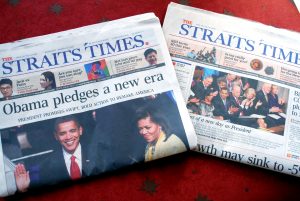Even before the economic upheaval of COVID-19, times were tough for traditional print media. People are increasingly consuming their news and other media via digital platforms rather than newspapers and magazines, and digital content is simply not as profitable in most cases. This has upended the business model of traditional print media companies, with readership and revenue in a general industry-wide decline.
This reality recently caught up with Singapore Press Holdings, the publisher of the country’s flagship English-language newspaper The Straits Times, and the dominant print media player since 1984. With the onset of the pandemic, Singapore Press Holdings posted a pre-tax loss of SGD $85.3 million in 2020. And while the pandemic made things worse than they might otherwise have been, in reality it merely accelerated a trend that was already underway.
Just 10 years ago, Singapore Press Holdings was a big money-maker, posting a pre-tax profit of SGD $365.6 million on over $1 billion in revenue from its print and media division in 2011. By 2019, pre-tax media profits had fallen to SGD $54.7 million on $582.3 million in revenue. With print circulation in steady decline, the company’s real estate holdings have been more profitable than its media business for several years. Given the reality of the modern media landscape, that trend seems unlikely to reverse itself.
In response, Singapore Press Holdings announced that it would spin off its media division into a not-for-profit subsidiary company, SPH Media Holdings. As the parent company, Singapore Press Holdings, which is still quite profitable from its real estate investments and has a lot of cash on hand, will fund the new entity with SGD $80 million in cash and $30 million in shares.
The move was met with skepticism from some, as there have been long-running doubts about editorial independence which will only be exacerbated now that the media division is no longer accountable to shareholders. But the truth is, print media and the state in Singapore have long been deeply intertwined. The 1974 Newspaper and Printing Presses Act established tight regulatory oversight of the media ecosystem, including a two-tiered shareholder structure for newspapers where a special class of management shares are retained by a few select entities. As of last year, Fullerton Limited, a wholly-owned subsidiary of the state investment fund Temasek Holdings, controlled 4 percent of Singapore Press Holdings’ management shares. Blue chips like OCBC, Great Eastern Life Assurance, and Singtel hold the majority of the management shares.
There is a logic to this arrangement. The provision of news and media is considered to be of national strategic importance in Singapore. By structuring newspaper shareholding in this way, the government wanted to prevent the exact thing that is currently happening in the United States, where anyone with deep enough pockets can buy up distressed media companies and then potentially push their own editorial agenda. With this latest restructuring, they are trying to insulate the media landscape even further from the vicissitudes of the free market.
There is a case to be made that digital and print media need to be protected from chasing profits at all costs. The classic recent example of this would be Donald Trump. He was great for the bottom line of struggling newspapers and other media companies. Les Moonves, the then-chairman of CBS, when asked in 2016 what he thought about Donald Trump running for president replied: “It may not be good for America, but it’s damn good for CBS.” With falling revenue and print circulation, newspapers looking to remain a going concern will be increasingly tempted to amplify the kind of sideshows that attract readers and sell more papers. This can backfire, of course, if the sideshow somehow becomes president and this is precisely the kind of outcome Singapore wants to avoid.
The situations are not exactly analogous, but the restructuring at Singapore Press Holdings should be viewed in that light. Ultimately, the government wants to insulate The Straits Times from pressure to chase profits as it becomes less commercially viable, because they don’t want media outlets publishing things or pushing agendas just because it will sell papers. By removing the profit motive, they can keep the presses running without risking the creation of a Singaporean version of Fox News. Whether that is the best way to regulate the provision of print and digital media is another question, but it is the way Singapore has chosen to do it and there is a clear logic behind it.

































